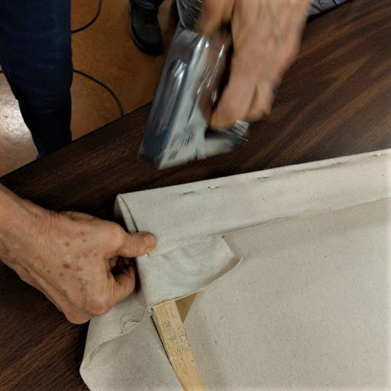By Nancy Brown
Nancy explained and demonstrated gallery wrapping and re-stretching a canvas over a wooden frame. She has used her own wooden frames for her paintings for years and prefers the hand-made frames over the pre-stretched canvas for a variety of reasons. The only disadvantage, she admits, is the weight. Because she uses stronger wood with larger dimensions, it does weigh more per linear foot. However, they don't warp and can be re-used many times. Below, you can see how she secures a corner; more pictures of her process can be found at this link. GalleryWrapping
Thank you, Nancy Brown!




 RSS Feed
RSS Feed